
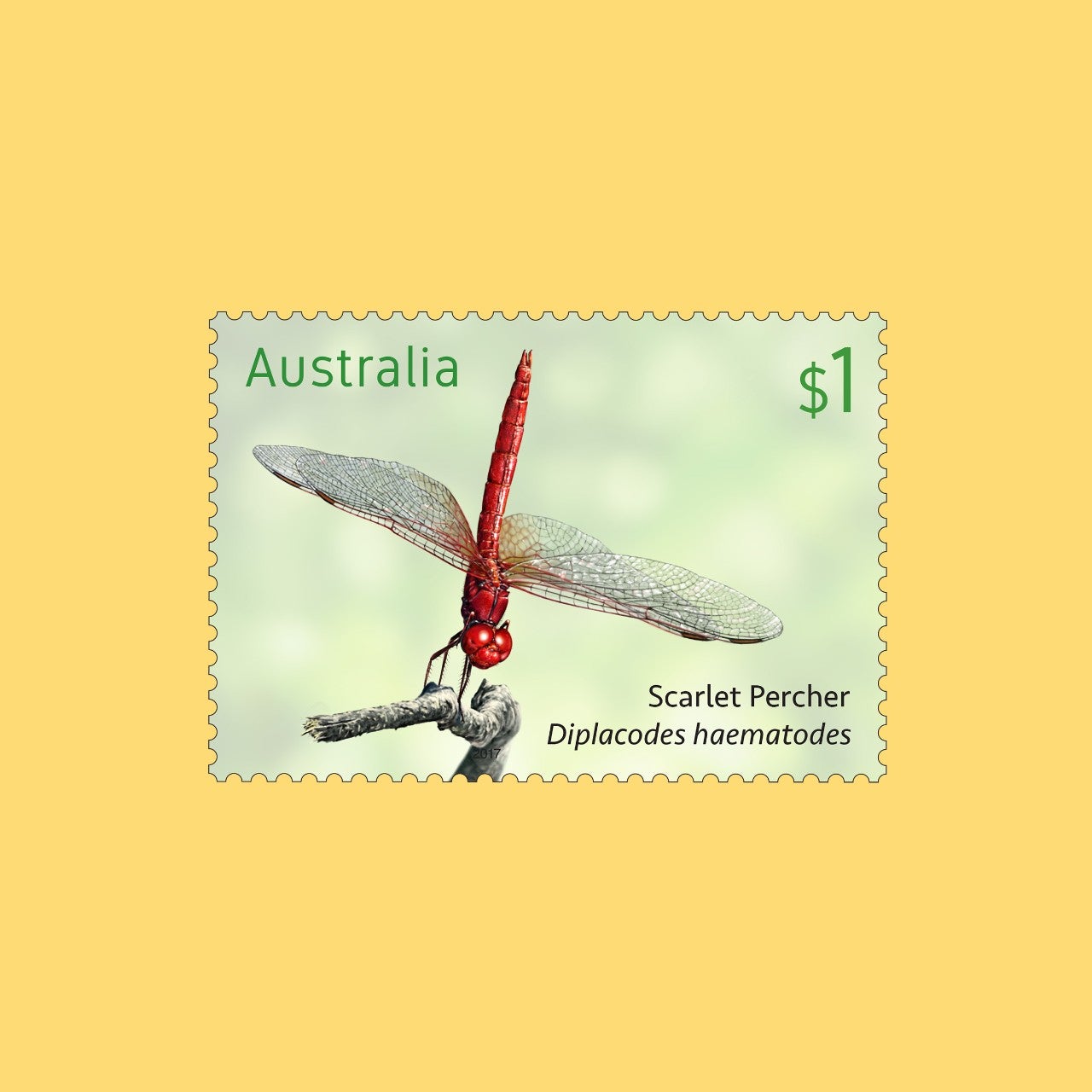
Scarlet Percher
Diplacodes haematodes
Percher species belong to the genus Diplacodes, which ranges through Africa and Asia into the western Pacific. Australia has five Percher species that are tiny to medium in size.
The Scarlet Percher reaches a length of 3.5 cms and has a wingspan of six centimetres. As its name suggests, red is the predominant colour on the head, thorax, abdomen, on the male, including part of its wing. Both the fore- and hindwings of the Scarlet Percher face forward when it is at rest. In contrast, the female is ochre coloured with dark wings.
This small dragonfly inhabits creeks, rivers and still waters right across Australia, preferring open sunny sites to shady areas. Unlike other dragonfly species, it will perch on rocks. The Scarlet Percher also has an extra-limital distribution in Timor, New Guinea, Vanuatu and New Caledonia.
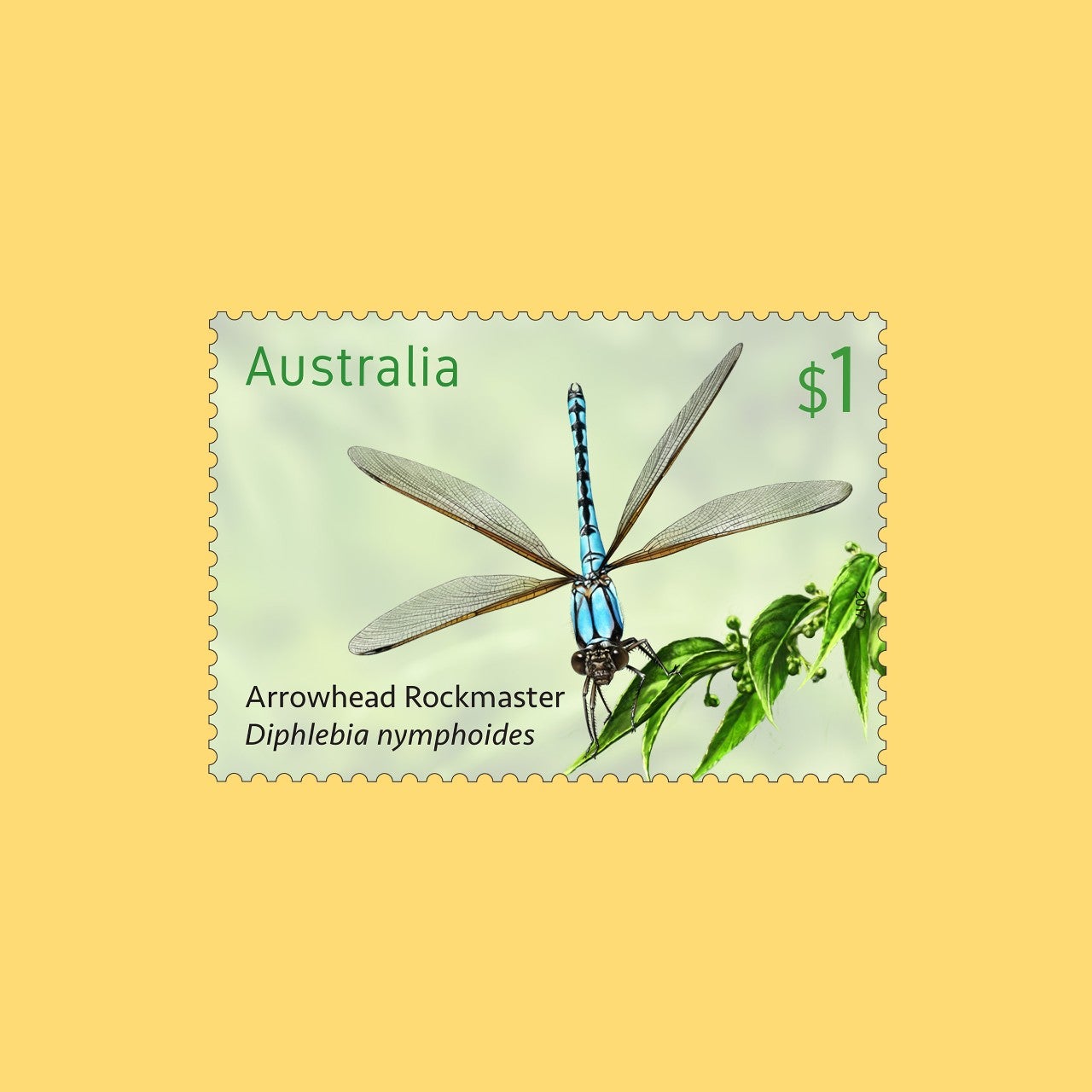
Arrowhead Rockmaster
Diphlebia nymphoides
The Arrowhead Rockmaster (Diphlebia nymphoides) is a beautiful mid-blue colour. The wings of the Arrowhead Rockmaster are coloured charcoal, which deepens in colour towards their tips. Adults grow to around five centimetres in length.
Diphlebia belongs to the suborder Zygoptera, making it a damselfly rather than a dragonfly proper. Unlike dragonflies, the both pairs of the damselfly’s wings are the same size and shape. While most damselfly species fold their wings neatly along their narrow body when at rest, the Rockmasters hold theirs more visibly above their bodies.
The Arrowhead Rockmaster occurs in southern Queensland, coastal New South Wales and Victoria, where it inhabits rivers, streams and intermittently flowing waterways.
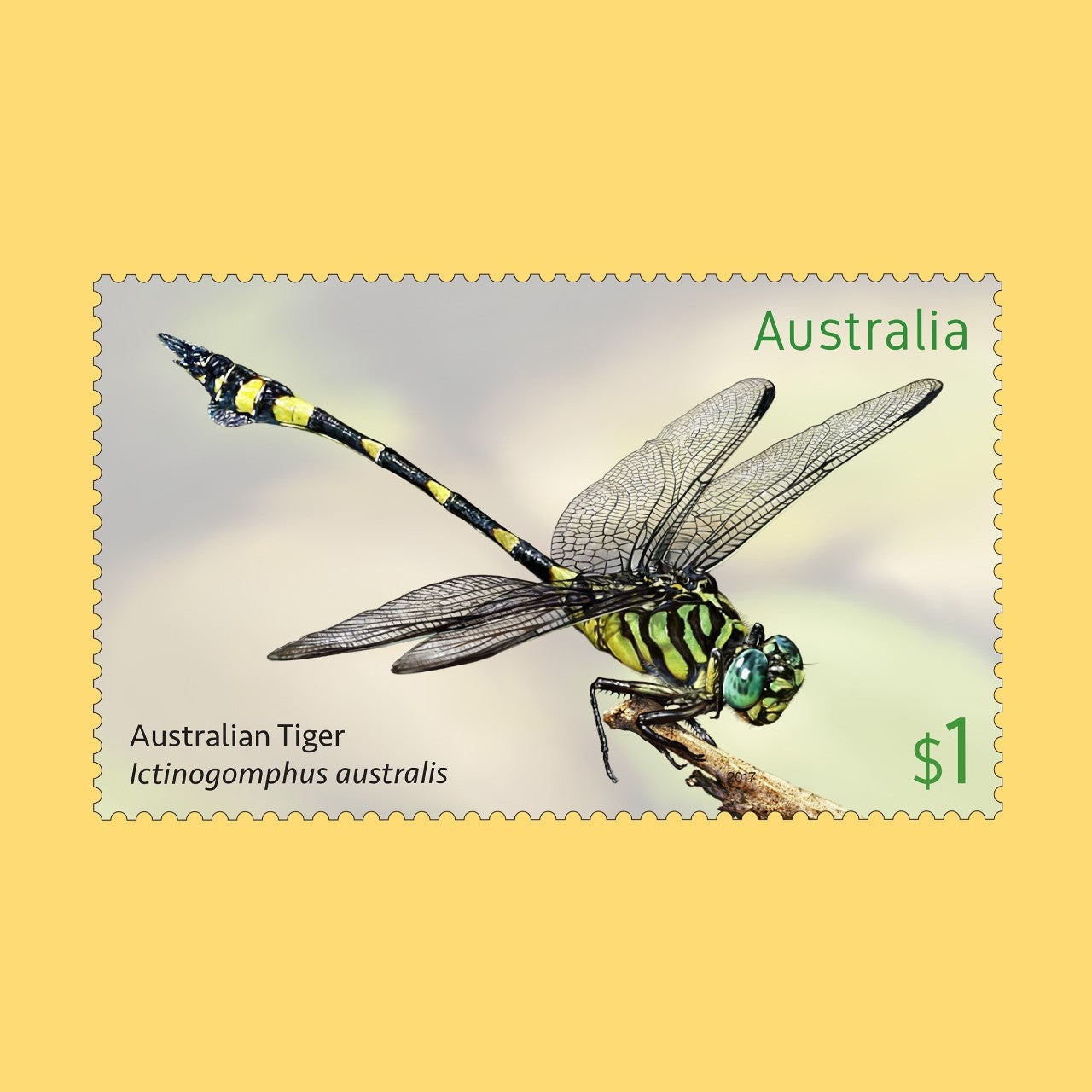
Australian Tiger
Ictinogomphus australis
The Australian Tiger (Ictinogomphus australis) is a striking dragonfly, its common name coming from its appearance – its pattern incudes yellow stripes on the abdomen. This large species grows to around seven centimetres in length and has a wingspan of up to 10 centimetres.
The Australian Tiger occurs in aquatic and coastal environments right across northern Australia and down the east coast through Queensland and New South Wales. The aquatic larvae will make shallow burrows into the mud.
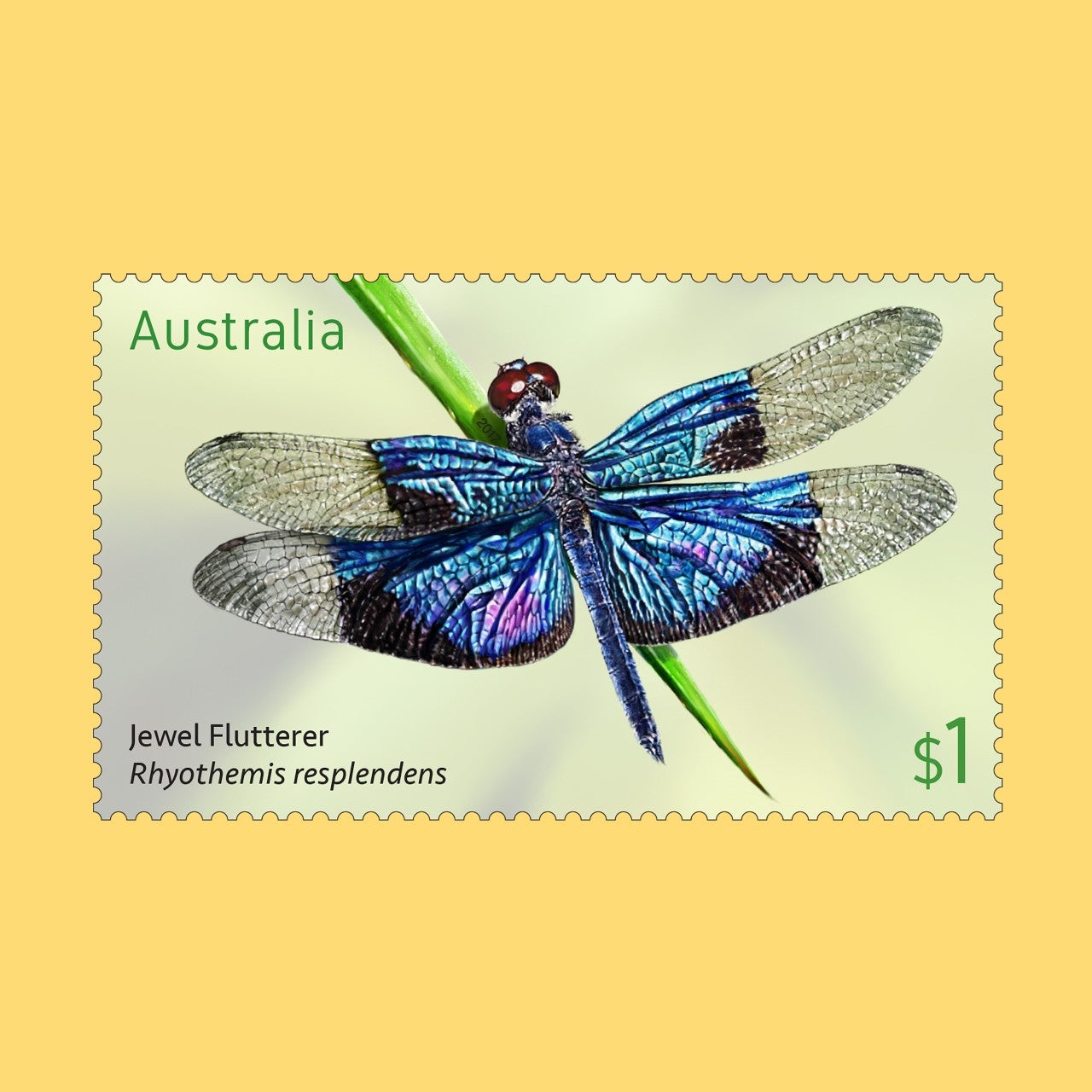
Jewel Flutterer
Rhyothemis resplendens
The Jewel Flutterer (Rhyothemis resplendens) is, as its name suggests, a brilliant jewel-like species. Its two pairs of proportionately large wings are coloured with panels of spectacular metallic blue, with areas of deeper blue at the back edge; the wrinkled metallic surface scatters the light, enhancing the species’ visibility.
The body of this small dragonfly is only around 2.5 centimetres in length; its wingspan is four to six centimetres.
It can be found near rivers, creeks and still waters in Queensland, from Cape York Peninsula south to around Mackay. This species also occurs in New Guinea, the Moluccas and Bismark Archipelago.
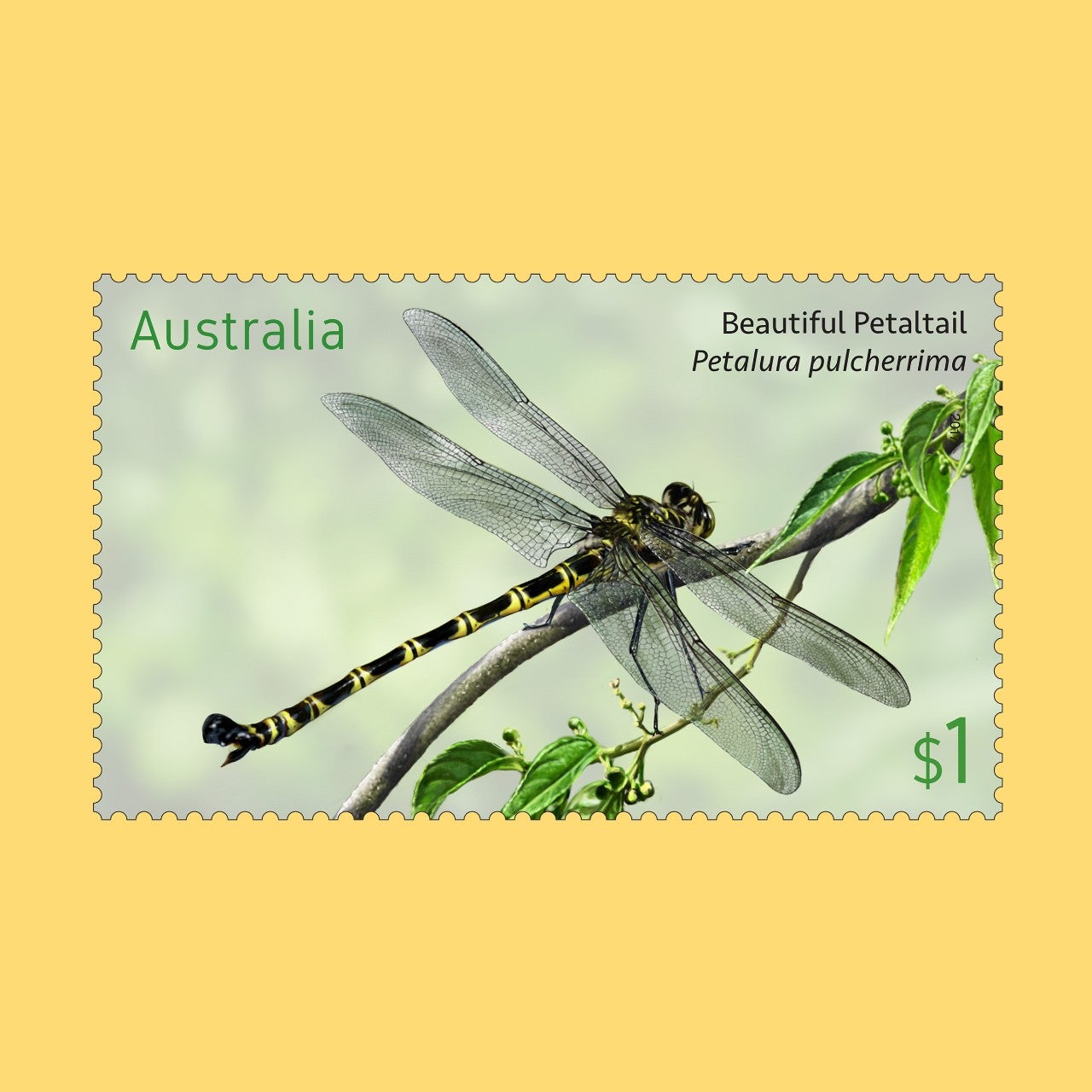
Beautiful Petaltail
Petalura pulcherrima
The Beautiful Petaltail is one of five Giant Dragonfly species that are endemic to Australia, the Giant Petaltail (Petalura ingentissima) being the largest of Petaluridae species worldwide. The Petaltail group takes its common name from the large, leaf-like appendages at the end of the male’s abdomen.
Adults of the very large Beautiful Petaltail (Petalura pulcherrima) reach nine to 11 centimetres in length, with a wingspan of 11 to 14 centimetres. Its body is dark brown to black with yellow bars, each of which has a brown line through it, giving the body a bamboo-like appearance.
This species occurs only in coastal north-eastern Queensland, occupying areas near rainforest streams. It is classified “endangered” on the IUCN Red List, due to human activities that affect its habitat such as timber harvesting and urban development.
Browse our Stamp Collecting Month themes from previous years
-

-

Australian Dinosaurs - Stamp Collecting Month 2022
-

Full STEAM Ahead! – Stamp Collecting Month 2021
-

Wildlife Recovery – Stamp Collecting Month 2020
-

In the Garden – Stamp Collecting Month 2019
-

Reef Safari – Stamp Collecting Month 2018
-

Dragonflies – Stamp Collecting Month 2017
-

Endangered Wildlife – Stamp Collecting Month 2016
-

Our Solar System – Stamp Collecting Month 2015
-

Things That Sting – Stamp Collecting Month 2014
